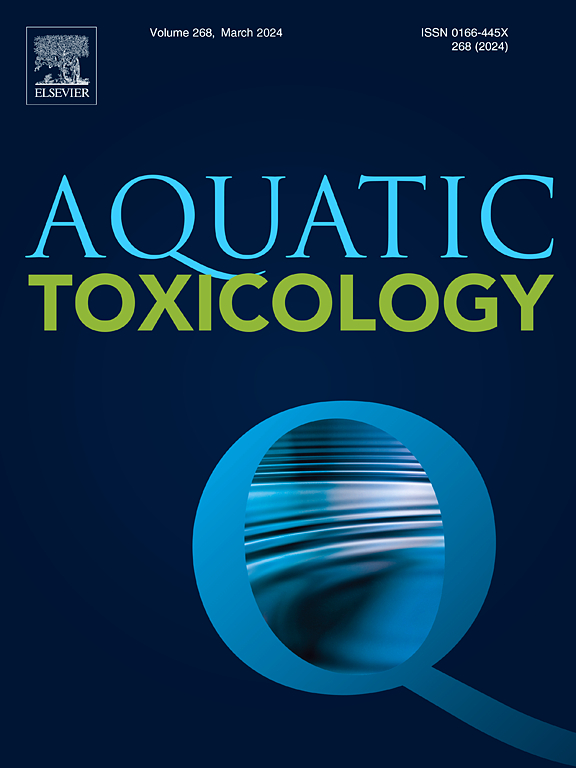Application of TKTD models in predicting time-resolved bioaccumulation and toxicity of pesticides to aquatic organisms
IF 4.3
2区 环境科学与生态学
Q1 MARINE & FRESHWATER BIOLOGY
引用次数: 0
Abstract
Pesticides play a crucial role in global food production, but their extensive use has led to increasing threats to aquatic ecosystems due to their ubiquitous occurrence in aquatic ecosystems and high toxic potency to non-target organisms. Conventional ecological risk assessment (ERA) approaches, which mainly rely on static external exposure thresholds (e.g., LC50s), are often inadequate for accurately predicting pesticide risks in environmentally realistic scenarios where pesticide exposures fluctuate dynamically due to intermittent pesticide applications and hydrological events. Recent advances advocate for a paradigm shift toward internal exposure-based metrics and mechanistic toxicokinetic-toxicodynamic (TKTD) modeling approaches to address these challenges. These models provide a robust framework for quantifying pesticide uptake, internal distribution, metabolism, and elimination processes in organisms (TK), and simultaneously characterize the time-dependent biological effects (TD). The present review synthesizes current applications of TKTD modeling in predicting bioaccumulation and toxicity of pesticides in aquatic organisms. The influences of chemical properties (e.g., hydrophobicity, metabolic potency) and biological traits (e.g., body size) on bioaccumulation potential of pesticides in aquatic organisms are evaluated. We further discuss the application of TD models in predicting time-resolved effects (e.g., delayed and carry-over effects) and species sensitivity. By integrating these mechanistic insights into aquatic risk assessment approaches and regulatory needs, a TKTD-based ERA framework is recommended for advancing pesticide risk assessments, particularly for addressing the challenges under realistic and fluctuating exposure conditions in natural aquatic ecosystems.
TKTD模型在预测农药对水生生物的时间分辨生物累积和毒性中的应用
农药在全球粮食生产中发挥着至关重要的作用,但由于农药在水生生态系统中的普遍存在和对非目标生物的高毒性,农药的广泛使用导致对水生生态系统的威胁日益增加。传统的生态风险评估(ERA)方法主要依赖于静态外部暴露阈值(例如lc50),在农药暴露因间歇性农药应用和水文事件而动态波动的环境现实情景中,往往不足以准确预测农药风险。最近的进展主张将范式转变为基于内部暴露的度量和机械毒性动力学-毒性动力学(TKTD)建模方法来解决这些挑战。这些模型为量化农药在生物体内的吸收、内部分布、代谢和消除过程(TK)提供了一个强大的框架,同时表征了时间依赖性生物效应(TD)。本文综述了TKTD模型在预测农药在水生生物体内的生物积累和毒性方面的应用现状。评价了化学特性(如疏水性、代谢效力)和生物特性(如体型)对农药在水生生物体内生物蓄积潜力的影响。我们进一步讨论了TD模型在预测时间分辨效应(如延迟效应和携带效应)和物种敏感性方面的应用。通过将这些机制见解整合到水生风险评估方法和监管需求中,建议建立一个基于tktd的农药风险评估框架,以推进农药风险评估,特别是应对自然水生生态系统中现实和波动暴露条件下的挑战。
本文章由计算机程序翻译,如有差异,请以英文原文为准。
求助全文
约1分钟内获得全文
求助全文
来源期刊

Aquatic Toxicology
环境科学-毒理学
CiteScore
7.10
自引率
4.40%
发文量
250
审稿时长
56 days
期刊介绍:
Aquatic Toxicology publishes significant contributions that increase the understanding of the impact of harmful substances (including natural and synthetic chemicals) on aquatic organisms and ecosystems.
Aquatic Toxicology considers both laboratory and field studies with a focus on marine/ freshwater environments. We strive to attract high quality original scientific papers, critical reviews and expert opinion papers in the following areas: Effects of harmful substances on molecular, cellular, sub-organismal, organismal, population, community, and ecosystem level; Toxic Mechanisms; Genetic disturbances, transgenerational effects, behavioral and adaptive responses; Impacts of harmful substances on structure, function of and services provided by aquatic ecosystems; Mixture toxicity assessment; Statistical approaches to predict exposure to and hazards of contaminants
The journal also considers manuscripts in other areas, such as the development of innovative concepts, approaches, and methodologies, which promote the wider application of toxicological datasets to the protection of aquatic environments and inform ecological risk assessments and decision making by relevant authorities.
 求助内容:
求助内容: 应助结果提醒方式:
应助结果提醒方式:


